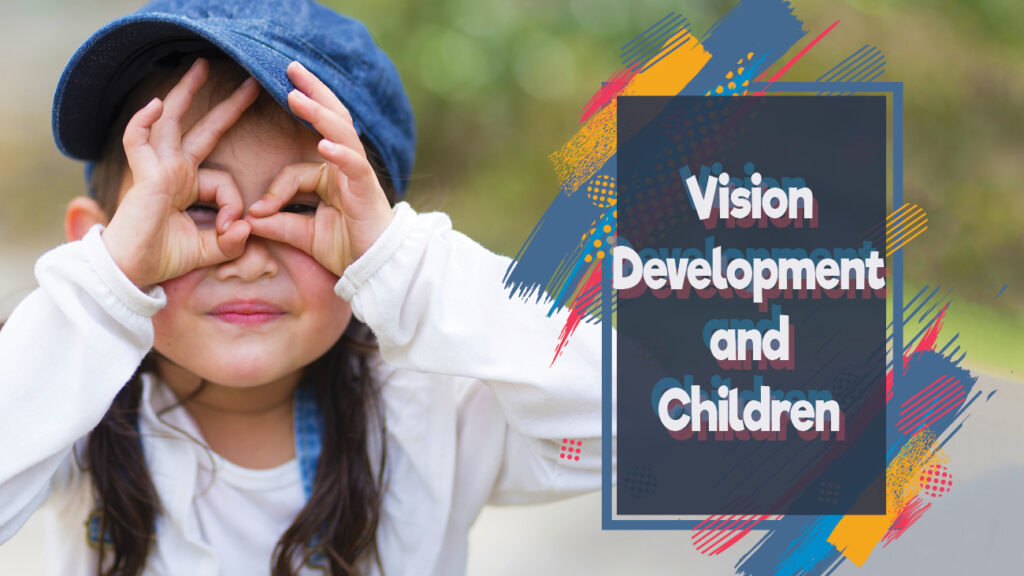Childhood is a critical time for vision development. Nearly 80% of what a child learns in school is presented visually. Arguably making vision the most important of the five senses. Visual skills start developing during pregnancy and continue to evolve and develop as a child grows. Undetected vision problems can cause developmental and educational delays in children.
Infant Vision Development
Your infant’s vision starts developing during pregnancy. It is crucial that toxins are not consumed during pregnancy as they can cause serious vision problems. At birth, babies only see black, white, and shades of gray. Infants are unable to focus on objects for several months and can only see the outline of objects.
As infants grow, they can distinguish between high contrast colors. By six months your child can see color, has sharper vision, and has begun developing hand-eye coordination skills. Schedule your child’s first eye exam at six months to make sure their eyes are healthy and on the right developmental track. Detection of eye health issues and vision problems at this stage in development can help to ensure your child does not experience setbacks in learning and growth.
When your infant begins to crawl and potentially walk they are learning to coordinate their body movements and their vision. Over time, your child will become better at judging distances. However, this is also a time when your child may grow more injury prone because they are exploring their environment. Bumps, bruises, eye injuries, and other injuries can occur which is why it is so vital to ensure that your infant’s vision is on track to prevent these injuries as much as possible.
Early Childhood Vision Development
During these years your child will be growing, developing, and improving their visual skills. It is recommended to schedule your child eye exam at three years old. Even if you don’t think your child has vision problems, your child is growing and changing. A comprehensive eye exam before your child enters school provides enough time to catch and correct any vision problems.
They are discovering how to integrate their vision and body position to complete new tasks. They learn this through playing games, throwing a ball, and riding a bike. Children are also working on developing their fine motor skills. The primary way preschool age children are learning this is through writing their name and the alphabet.
Between the ages of 3 to 6 is when you, as a parent, may begin to notice signs of a vision problem. If your child complains about headaches or tired eyes, this could potentially be due to a vision problem. Signs of vision problems include squinting, tilting the head, frequently rubbing eyes, and closing one eye to see. Additionally, look for sitting too close to a tv, holding a book too close, or avoiding activities that require near or distance vision. Some of these activities include coloring, reading, playing ball, or tag if you notice these signs in your child schedule an eye exam as soon as possible. Correct their vision before any learning is delayed!




